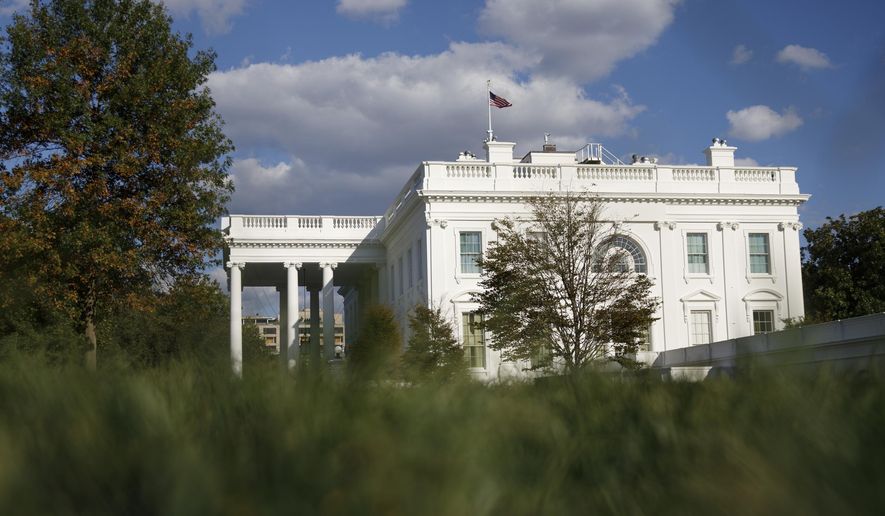American Indian leaders on Wednesday told emotional stories of missing loved ones and delivered practical steps to Trump administration officials during the first listening session of a newly created federal task force to combat the epidemic of missing and murdered indigenous women.
Dubbed Operation Lady Justice, the seven-member task force created by President Trump met Wednesday on the sidelines of the winter session of the National Congress for American Indians at the Capital Hilton in Washington, D.C. Task force members heard testimony and an urgent call about the violence, which often emerges among several jurisdictions in remote areas.
“If a person is murdered in the village, you’ll be lucky if someone comes in three, four days to work the murder site and gather what needs to be gathered so you can figure out a case later,” said retired hospital administrator Patricia Alexander, a native Alaskan from Sitka. “But if you shoot a moose out of season, you’re going to get two brownshirts there that day or the day after priorities are kind of messed up.”
Tara Sweeney, the assistant secretary for Indian affairs, and Katharine Sullivan, the principal deputy assistant attorney general for the Office of Justice Programs, opened the hour-long event by saying they intend to convene similar sessions over the next six months. They said the hope gather from many of the nation’s nearly 600 federally recognized tribes perspectives on and recommendations for addressing the violence. Research shows that violence affects 4 out of 5 American Indian women.
“What kind of recommendations would you all like to see in these reports?” said Ms. Sullivan, Attorney General William Barr’s designee on the task force. “What partnerships would you recommend? What does an effective partnership look like?”
Chief Justice Michelle Demmert of the Central Council of the Tlingit and Haida Indian Tribes of Alaska pointed to Public Law 280, which transfers police authority on a reservation from the federal government to state officials, as an underlying legal structure that leads to chronic underfunding and insufficient training of police officers.
“If there is a death, it could take hours, days, even weeks to get there, depending on the time of year,” said Judge Demmert, noting a funding discrepancy between tribes who operate under the public law and those that do not. “We need local control to local solutions to local problems. We cannot wait, days hours weeks for that to happen.”
Violence against native women is occurring at a staggering rate across the nation, especially in Alaska, where more than 40% of female murder victims in 2017 were American Indian or native Alaskan, despite representing less than 20% of the population, according to numbers from the Violence Poverty Center.
Nationally, indigenous women are 10 times more likely to be killed than the average national murder rate. As of 2016, more than 5,700 native women and girls were reported missing.
Administration officials heard about states’ plans. For example, Arizona Gov. Doug Ducey, a Republican, signed legislation last year to create a statewide task force that will gather data about missing and murdered indigenous women.
Indian leaders said another tool would be for Congress to reauthorize the Violence Against Women Act. In 2013, that law was amended to include special protections for native women. The House has passed the legislation, but it has not yet been brought up for a vote in the Republican-led Senate.
Earlier Wednesday, down the hall at the winter session, Sen. Martin Heinrich, New Mexico Democrat, called for Congress to reauthorize the Violence Against Women Act.
“We should not wait one more day to reauthorize [the law],” Mr. Heinrich said to applause.
Monica Antone, a council member for the Gila River Indian Community outside Phoenix, called more funding while recounting the successful story of family members — with law enforcement’s help — in tracking down a missing woman who had gone to Las Vegas.
“All pitched in,” Ms. Antone said, noting fees for a hotel, meals and gas for the family to reach Las Vegas. “What we’re missing is the gap for resources.”
When the Justice Department launched Operation Lady Justice in November, it dedicated $1.5 million to hire 11 coordinators to assist U.S. attorney’s offices in Alaska, Arizona, Montana, Oklahoma, Michigan, Utah, Nevada, Minnesota, Oregon, New Mexico and Washington state.
On Monday, the Trump administration released its fiscal 2021 budget, allocating an additional $3 million for the new task force.
• Christopher Vondracek can be reached at cvondracek@washingtontimes.com.




Please read our comment policy before commenting.